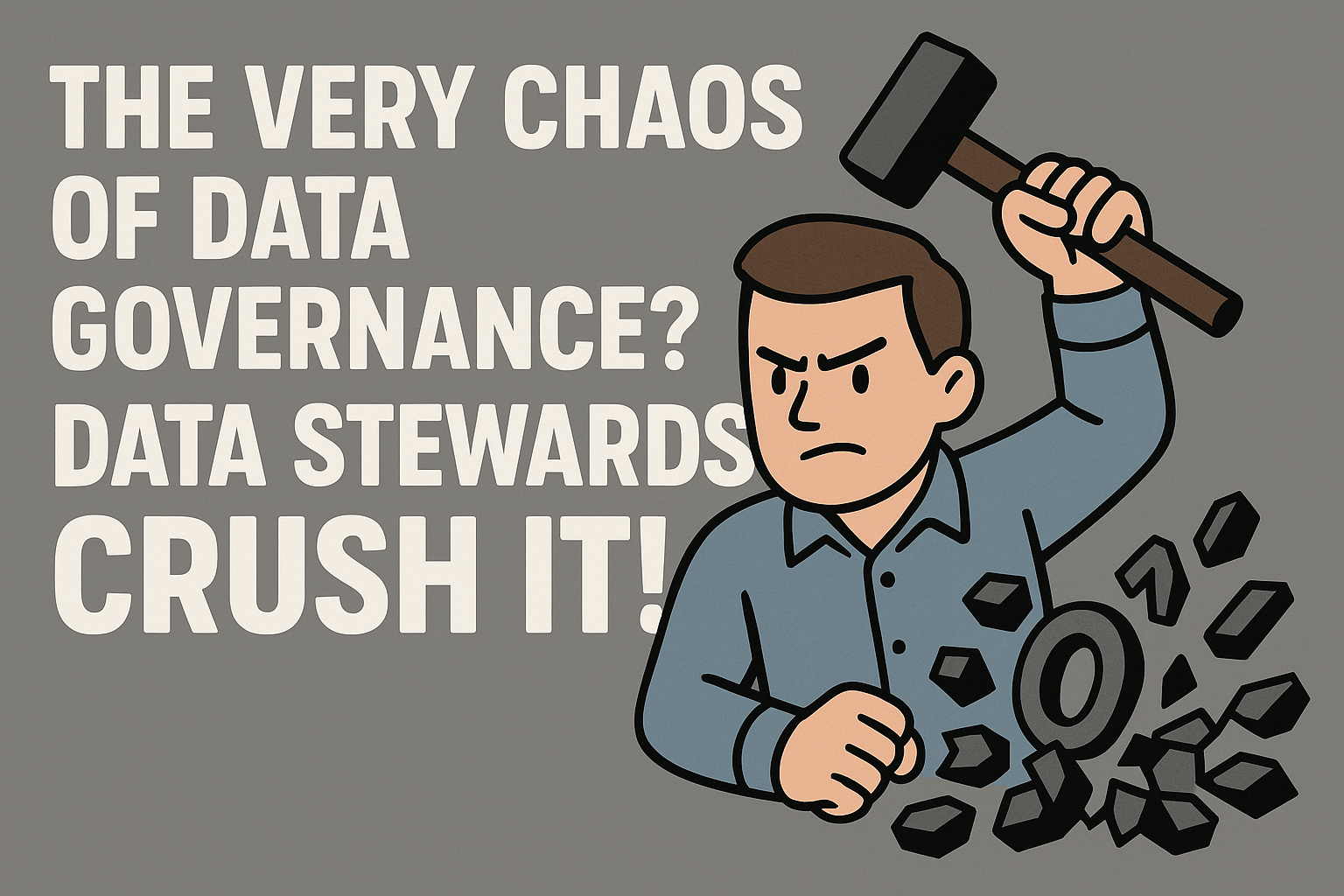Trying to do everything at once is overwhelming. Instead, take it step by step. Data governance is a marathon, not a sprint.
A roadmap is like a travel itinerary—you don’t visit all destinations on the first day. Instead, you plan:
- “Day 1: Explore the city”
- “Day 2: Visit historical sites”
Similarly, in data governance:
- “Month 1: Data quality check”
- “Month 2: Security review”
1 The Pitfall of Doing Too Much at Once
My friend, Jake, once said:
- “Let’s fix everything at once!”
It was a disaster. He got overwhelmed and gave up. Later, he regretted it:
- “I should have taken it one step at a time!”
So, we created a roadmap together:
- Identify the biggest issue → His customer data was a mess.
- Break it into steps → “Week 1: Clean customer names. Week 2: Fix addresses.”
- Implement gradually → Within a month, his data was organized.
2 How to Create a Data Governance Roadmap
A roadmap should be structured into phases:
- Assess the Current Situation
- Identify the main problems:
- Is data disorganized?
- Are governance policies unclear?
- Are tools outdated?
- Set Small, Achievable Goals
- Example: “Let’s clean up customer data within a month.”
- Start with manageable tasks before tackling complex problems.
- Expand Gradually
- Once a small goal is achieved, move to the next step.
- “Customer data is fixed? Let’s clean up order data next!”
- Commit to the Full Process
- Keep progressing until data governance is fully integrated.
3 Data Governance Needs a Roadmap
3.1 Why You Shouldn’t Start Governance Without a Plan
To manage data effectively, you need governance—a structured system of policies and rules. But jumping into governance without a plan can lead to chaos. Just as you wouldn’t take a trip without an itinerary, data governance requires a structured roadmap.
Governance doesn’t happen overnight. Instead, it progresses through three phases:
- Phase 1: Initial Design – Establishing the foundation.
- Phase 2: Execution & Integration – Implementing and refining processes.
- Phase 3: Long-Term Optimization – Enhancing governance over time.
This chapter explores why a roadmap is essential and how to build one effectively.
3.2 Phase 1: Initial Design – Laying the Foundation
The first step in governance is setting up the framework. This is the Initial Design phase, where the organization defines roles, responsibilities, and policies.
3.2.1 How to Start
- Suppose a bank wants to manage customer data more effectively. The first step is determining:
- Who is responsible for data management?
- What rules should govern data usage?
- In the roadmap, this aligns with “Establishing a Data Governance System”—starting with basic policies like “Customer data will be reviewed every two years” or “Create a data management team”.
3.2.2 Why Is a Roadmap Necessary?
- Trying to do everything at once is overwhelming.
- The initial phase should focus on defining the big picture, then gradually refining details.
3.2.3 Real-Life Example
- A startup may begin with a simple rule: “Encrypt all customer data.”
- Over time, they define who manages encryption and how access is controlled.
3.3 Phase 2: Execution & Integration – Putting the Plan into Action
Once the framework is in place, the next step is execution and integration. In this phase, governance policies are applied, and data management systems are integrated across teams.
3.3.1 How to Implement
- Continuing with the bank example:
- If Phase 1 established a data management team, Phase 2 is when the team starts reviewing customer data quality and enforcing security policies.
- The roadmap includes “Implementing Data Governance” and “Building an Integrated Identity System” to ensure that marketing and IT teams share consistent customer data.
3.3.2 Why Is a Roadmap Necessary?
- During execution, problems emerge, such as:
- “There are duplicate customer records.”
- “Security policies aren’t strong enough.”
- A structured roadmap allows these issues to be addressed progressively rather than causing system-wide failures.
3.3.3 Real-Life Example
- A company initially managed customer data via email.
- In Phase 2, they introduced a CRM system to unify customer data across departments.
3.4 Phase 3: Long-Term Optimization – Gradual Enhancement
Once governance is running, the next step is long-term refinement. This phase ensures that governance evolves alongside new regulations, technologies, and business needs.
3.4.1 How to Improve
- Suppose the bank achieves 80% customer satisfaction in Phase 2.
- The long-term goal in Phase 3 could be to raise it to 90%.
- The roadmap might include:
- Adopting AI-driven customer behavior analytics.
- Reducing data security audit intervals to enhance protection.
3.4.2 Why Is a Roadmap Necessary?
- The world constantly evolves, and governance must keep up.
- Regulations like GDPR or new AI-driven fraud detection systems require governance to adapt over time.
3.4.3 Real-Life Example
- A large corporation initially conducted manual data audits.
- Over time, they implemented automated monitoring tools, reducing errors and increasing efficiency.
3.5 Final Takeaway: Governance is a Journey, Not a Destination
A structured roadmap prevents governance efforts from becoming overwhelming.
- Phase 1: Design the framework – Establish roles and policies.
- Phase 2: Execute and integrate – Apply governance policies and integrate systems.
- Phase 3: Optimize continuously – Adapt governance based on business and regulatory changes.
Like remodeling a house, governance is never truly finished. A roadmap ensures that data management evolves step by step, making it sustainable and effective

